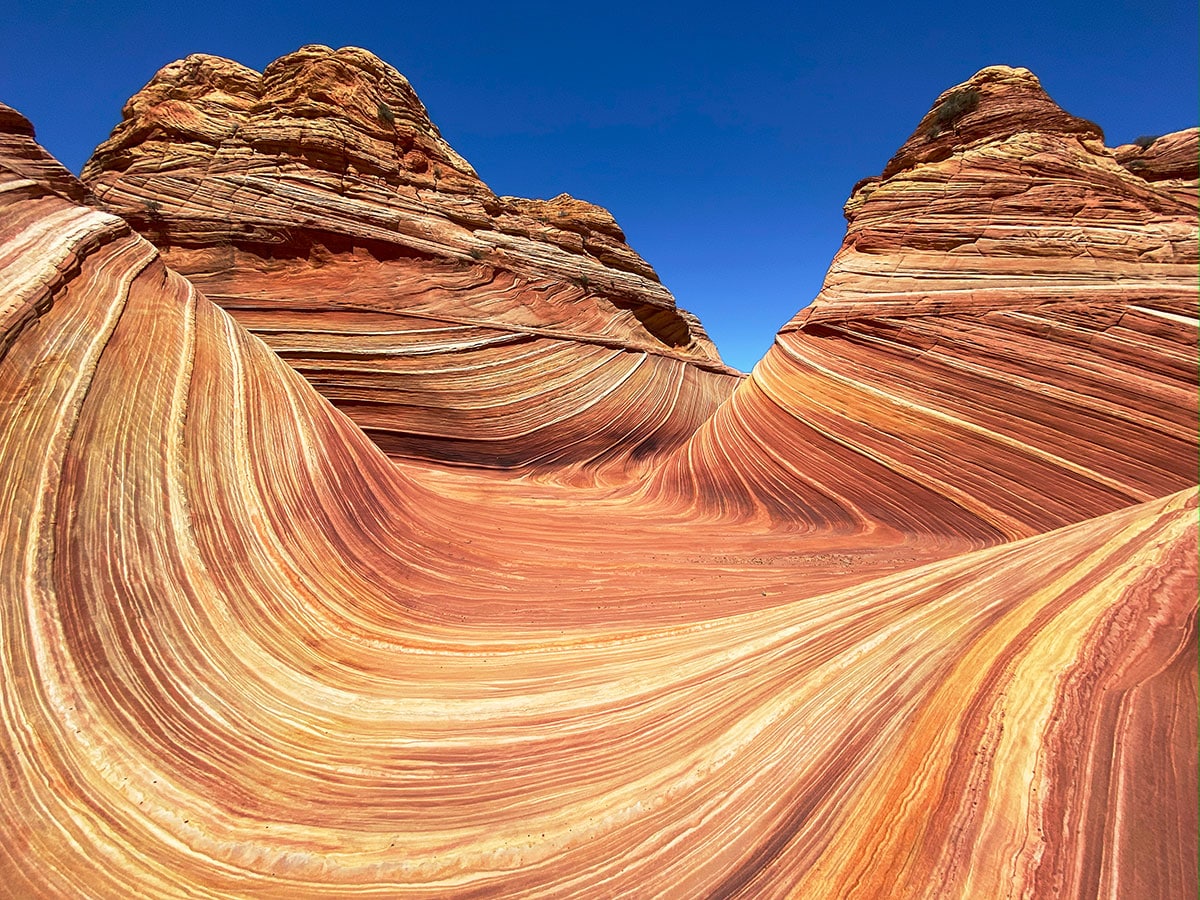Coyote Buttes North
The Wave
Trail Length: 6.5 miles out-and-back
Degree of Difficulty: Moderate
Elevation Change: 1,500 feet
In the heart of the Vermilion Cliffs National Monument in northern Arizona lies a geological wonder known as "The Wave." This unique sandstone formation has captivated the imagination of adventurers, photographers, and nature enthusiasts from around the world. This page will delve into the fascinating details of what The Wave is, the reasons behind its unparalleled popularity, how it was formed, its location, obtaining permits, and what to expect if you have obtained a permit.
Where is the wave located?
Situated on the Utah-Arizona border within the Paria Canyon-Vermilion Cliffs Wilderness and Coyote Butte. The Wave is part of the Vermilion Cliffs National Monument. The remote location and protected status of the area contribute to its pristine and unspoiled condition. Visitors can expect an isolated and serene environment that enhances the sense of wonder when encountering this geological masterpiece.
Hiking to the wave
Accessing The Wave requires embarking on a challenging hike. The round-trip trek covers approximately 6.5 miles, starting from the Wire Pass Trailhead. Hikers must navigate a combination of sandy terrain, rocky slopes, and occasional scrambling. The elevation gain and difficulty of the trail is not extreme but the environment is very exposed on an often undefined trail. Challenges that hikers face are, getting lost, extreme heat, and sun exposure. The difficulty of the hike, coupled with the unpredictable desert climate demands proper preparation, a reasonable level of fitness, and a reliable means of navigation.

What is the wave?
How was the wave formed?
Why is the wave so popular?
The Wave has gained international acclaim through social media, with stunning photographs shared by lucky visitors spreading its fame. Its popularity has turned The Wave into a bucket-list destination, attracting nature enthusiasts, photographers, and adventure seekers from all corners of the globe.
Getting to the wave
An additional challenge those exploring the area must be prepared for is, much of the trail is unmarked making navigation preparedness vital. The BLM reccommends considering the hiring of a guide and urges only attempting with the proper hiking and navigation experience. It is very easy to get lost on the vast and seemingly endless red rock surface and desert expanse.
Permits
The max group size is 6 people. Dogs are permitted in the area with a fee and do not count against the permit allowance. If visitors secure an approved guide, one guide is permitted and also does not count against the permit allowance.
What to bring
- Sturdy and comfortable hiking shoes.
- Sun protection: Hats, bandanas, sunscreen, sunglasses.
- Water/food.
- Navigation: Maps, off-grid navigation, and/or a guide.
Seasons
Nearby
White Pockets
Antelope Canyon
Horseshoe Bend
